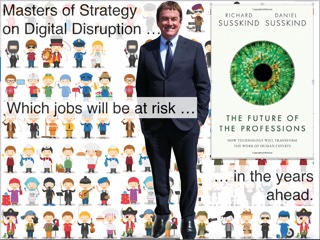 “The Future of the Professions” predicts job decline. In an Internet society, according to Richard Susskind and Daniel Susskind, we will neither need, nor want, doctors, teachers, accountants, architects, consultants, lawyers, and many others, to work as they did in the 20th century. Not only will work practices change but the numbers of people involved in the process will decline significantly. Using the models provided by the BBC, Deloitte and Oxford University, we quantify the projected loss in the different sectors over the next twenty years. The Future of the Professions explains how artificial intelligence will bring fundamental change in the way the 'practical expertise' of specialists is made available. In the digital age, our current professions appear antiquated and opaque. Traditional business models are vulnerable to digital disruption given free access to the internet of knowledge by things of choice. Professions will be forced to confront the challenges of automation, innovation, online access and different ways of communication. Accessing data and managing data has never been as easy or as affordable. Businesses are adapting to the virtual workforce with remote working, home working and above all access to specialist expertise on an ad hoc basis. For businesses and individuals, this is the era of information liberalisation. Access to online self help, with crowd collaboration and experience sharing means individuals can receive personalised advice as never before. In Sickness and in health … Some of the great changes will occur in the medical profession. Already, devices like Jawbone, Fitbit and MyFitnessPal are able to generate large volumes of data, for self health monitoring including pulse rates, calorie burn, sleep patterns and happiness levels in real time 24/7. This is the era of the wearables. Artificial Intelligence is helping too. In December 2014, the US Department of Veterans Affairs signed a $6 million contract with IBM’s Watson to advise on Post Traumatic Stress Disorder. In March 2015, Novartis announced a deal with Google to develop a contact lens that monitors blood sugar levels. Developments in “wearables” will be mirrored by developments in ingestibles. A series of nano products will enable internal monitoring and adjustment. A sort of “swallow your surgeon” option with nano devices wandering around the blood stream annihilating problematic cell structures in free time. In Eric Topol’s The patient will see you now! Eric argues the future of medicine will be in your own hands. you could use your smartphone to get rapid test results from one drop of blood, monitor your vital signs both day and night, and use an artificially intelligent algorithm to receive a diagnosis without having to see a doctor. All at a small fraction of the cost imposed by our modern healthcare system. Computers will replace physicians for many diagnostic tasks. “The robot will see you now!” Massive, open, online medicine, where diagnostics are done by Facebook-like comparisons of medical profiles, will enable real-time, real-world research on large population samples. In Star Trek, a medical tricorder is used by doctors to help diagnose diseases and collect body information about a patient. A tricorder in every home should be the aim of a future NHS. Buy one get one free, would guarantee a second opinion. Bulk buying options would cater for hypochondriacs with a basic mistrust of the medical profession. Education … In Education, there are already huge changes taking place as a result of digital disruption. It is estimated the over one billion education apps are installed on digital devices around the world. In “Learning with Big Data, The Future of Education: Viktor MayerSchönberger and Kenneth Cuvier Courses” talk of courses tailored to fit individual pupils and textbooks that talk back. This is tomorrow’s education landscape, thanks to the power of big data. These advances go beyond the much-discussed rise of online courses. The surge in MOOCs - Massive Open Online Courses is surrendering to SPOCs (Small Private Online Courses). Harvard, one of the world's most influential universities, is evaluating a move to Spocs. Consider that each month half a billion people dip into 35 million articles on Wikipedia. Every expert in the world on any subject is just one click away using Google Search. The era of the “Sage on the Stage” is ending. The concept of “The Guide on the Side” will emerge. The digital age, is an age of snap learning. Two minute video clips and 140 characters on Twitter are conditioning students to reject the lengthy tomb and learned paper. Legal and Accountancy … In the legal profession, huge disruption is already taking place with the emergence of paralegals, automation, AI and the break down of the classic legal partnership function. In “Tomorrow’s lawyers” Richard Susskind suggests, the legal profession will change more rapidly over the next twenty years, than it has over the last two hundred years. Susskind sees a legal world of virtual courts, Internet-based global legal businesses, online document production, commoditised service, legal process outsourcing, and web-based simulated practice. Legal markets will be liberalized. Yet, far from reducing the number of people employed in the legal sector, there could be new jobs for lawyers and new employers. In accountancy it is estimated just 1% of tax jobs will be free from the risk of automation. Accountancy packages such as Xero, Cashflow and QuickBooks are easy to use and cloud based. New software is making inroads into the older established hard to use packages which are more specialist dependent. So which sectors will be at risk … Last week we discussed the speech delivered by Andy Haldane in which he suggested that almost half the workforce, or 15 million jobs could be at risk as a result of AI and robotics. Oxford University academics Michael Osborne and Carl Frey calculated how susceptible to automation each job is based on nine key skills required to perform it; The list includes social perceptiveness, negotiation, persuasion, assisting and caring for others, originality, fine arts, finger dexterity, manual dexterity and the need to work in a cramped work space. The results in association with Deloitte were published on the BBC website. Sectors most at risk were banking, accountancy, tax and insurance. Sectors least at risk were Digital, Creative, Higher Education and (I am happy to say) economists. Upload our extended analysis here! Should we be too worried? As we mentioned last week, the technology debate was re-stirred in the 1930s, at the time of mass unemployment during the Great Depression. In “Economic Possibilities for our Grandchildren”, Keynes predicted on-going technological advance and workers being replaced by machines (Keynes (1930)). Fewer working hours and more leisure time the predicted outcome. We heard this later almost fifty years ago with the forecast demise of manufacturing and the huge job losses predicted as a result. Will it be so bad? Projections over the net twenty years are difficult to accept and sustain. But every business should check out vulnerability to Digital Disruption. Stay with us on our journey as we examine the challenge of Digital Disruption in our Masters of Strategy series. Next week, we will look at “Empires in the Cloud” ... the key players creating the dominant digital platforms for the years ahead. Happy (Digital) Strategies, John John Ashcroft PhD BSc(Econ) FRSA, CBIM Reading and Book references ... 1 The Future of the Professions: How Technology Will Transform the Work of Human Experts Jan 1, 2016 by Richard Susskind and Daniel Susskind 2 Learning with Big Data , The Future of Education: Viktor MayerSchönberger and Kenneth Cuvier 3 The Future of Employment Carl Benedikt Frey and Michael Osborne. Rise of the Robots: Technology and the Threat of a Jobless Future by Martin Ford and Jeff Cummings 4 Tomorrow’s Lawyers, Richard Susskind OUP 2013 5 The patient will see you now! TheFuture of Medicine is in Your Hands Eric Topol Basic Books 2015 5 'The Future of Employment: How susceptible are jobs to automation'. Data supplied by Michael Osborne and Carl Frey, from Oxford University's Martin School. 7 Deloitte The Robots Are Coming 2015 8 Figures on UK job numbers and average wages from the Office for National Statistics and Deloitte UK. 9 The Future of Employment: How Susceptible are jobs to computerisation. Carl Benedikt Frey and Michael A Osborne. September 2013.
1 Comment
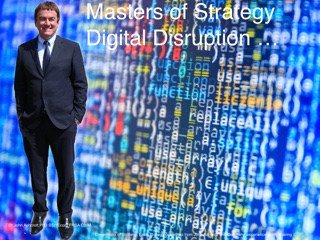 Impact of the Internet The Internet has had a world-changing impact on businesses over the last twenty years. Cloud technology has emerged. Access speeds have increased as the costs of data processing and storage have fallen. Online connectivity is huge. We claim 2016 as the year of singularity when the number of digitally connected devices, equalled the number of people on the planet. From a level of around 7.4 billion this year, we forecast the number of digitally connected devices will increase to around 11 billion by 2020, peaking around 15 billion by 2030. It is estimated the internet of things could lead to over 50 billion devices connected to the internet by 2020. Over the next ten years, change could happen even faster. The rate of change is increasing. Not exponentially, that’s just a function of how you squeeze the x axis. It is increasing at a faster and faster rate. Industries of the future … So which will be the industries of the future? That’s a tough assessment. Using the Donald Rumsfeld formula, there are known knowns, the things we know we know; There are known unknowns, the things we know, we don’t know; But there are also the unknown unknowns, things we don’t yet know, we don’t know. This is the great suspicion about forecasting and determining the industries of the future with so little hard information other than history to guide us. Things will happen of which, as yet, we know nothing. In 1943 Thomas J Watson Chairman of IBM claimed “There is a world market for about five computers”. In 1950 Popular Mechanics reckoned “Computers in the future may weigh no more than 1.5 tonnes”. Now in the digital age, the ambition for advanced economies at least should be a computer (or digital device) in every home and high speed broadband access for all. So which will be the industries of the future? Where better to start than with Alec Ross and "The Industries of the Future". As Hillary Clinton's Senior Advisor for Innovation, Alec Ross travelled nearly a million miles to over forty countries. “From refugee camps in the Congo and Syrian war zones, to visiting the world's most powerful people in business and government, Ross's travels amounted to a four-year masterclass in the changing nature of innovation”. In "The Industries of the Future", Ross distils his observations on the forces that are changing the world. He highlights the best opportunities for progress and explains how countries thrive or dive. Ross examines the specific fields that will most shape our economic future over the next ten years, including robotics, artificial intelligence, the commercialisation of genomics, cybercrime and the impact of digital technology on so many areas including “precision agriculture” Ross gives readers a vivid and informed perspective on how sweeping global trends are affecting the ways we live, now and in the future. In this week’s feature, we are going to focus on robotics, artificial intelligence, data mining and predictive analytics. Sectors in which the future is already encroaching on the present. Global spending on robots was an estimated $15 billion in 2010. By 2025 it is estimated to rise to $67 billion. Robotics … We have heard many scare stories of the invasion of robotics into the work place. Hundreds of thousands of jobs lost to the next generation of mechanoids. Droids equipped with a better AI software load soon with an emotional quotient. A robot that can laugh at, and cry with, the workers to be displaced. From the professions to care homes, the installation of robots will disturb the current perception of the work place. We accept the installation of robotics on the production line. Confronting “Cognitive Agents” at Enfield Council and other local authorities may yet be a step too far too soon for many rate payers. Andy Haldane Chief Economist at the Bank of England delivered a speech in November last year suggesting 15m UK jobs could be taken by robots as automation spreads through the workforce, thats half the workforce! No need to worry about immigration in the years ahead. Robots will pick the farm fields of Boston, look after the elderly and deal with aspects of healthcare. Yes the “robot will see you now” will be the call through the surgery. Droids dishing out pills for depression as the displaced seek medication, the likely out turn. Occupations most at risk include administrative, clerical and production tasks. For an accountant, the probability of vocational extinction is 95%. For a hairdresser, it is 33%. For economists the potential extinction quotient is much lower at 15%. Should we be worried? Concerns about job substitution are hardly new. As Haldane explained, the technology debate was re-stirred in the 1930s, at the time of mass unemployment during the Great Depression. In “Economic Possibilities for our Grandchildren”, Keynes predicted on-going technological advance and workers being replaced by machines (Keynes (1930)). Yet far from being a threat, Keynes viewed this as a huge opportunity. He predicted that, by 2030, the average working week would have shrunk to 15 hours. Technology would give birth to a new “leisure class”. Overnight droid deliveries from a commercial fleet of vehicles on smart motorways may well be the norm. By 2030, just the economists and hairdressers would be fulfilling a working week. AI and Robotics offer great opportunity to fulfil the shortage of doctors, nurses and teachers in the developed world. Great advances in equality, welfare and deprivation can achieved be better access to education and first line medical care in developing countries. Data the raw material ... Lots of excitement too about deep data mining and predictive analytics. As we explained earlier in this series on Digital Disruption, the volume of data to be analysed will explode. Data created by the internet of everything will exceed 500 ZettaBytes by 2020 up from 150 ZettaBytes in 2015. That’s over half a Yottabyte each year with more to come. By 2050 there will be a lot of Yottabytes to be stored and analysed every year. The Google Acquisitions of Boston Dynamics and Deep Mind are witness to the significance of this trend to the internet majors. IBM’s Watson is already placing highly complicated algorithms and neural networks into the hands of many. Deep Mind is currently working with the NHS with a trial of triage assessment in A & E. Data management, simultaneous translation, predictive behaviours will be delivered into the hands of businesses of every shape and size. But what to do with the data ? Predictive technologies developed by Google and Amazon are setting the standards for consumer service, user journeys and experience by which by which all businesses, both B2B and B2C, will be judged. Tesco’s acquisition of Dunnhumby in 2004 helped propel the supermarket to national dominance using the data provided by the Tesco loyalty card. Palantir is building data fusion platforms for integrating, managing, and securing any kind of data, at massive scale. “On top of these platforms, we layer applications for fully interactive, human-driven, machine-assisted analysis” as Alex Camp CEO explains. Great successes have been claimed by Palantir. Using big data to find missing kids.“How Palantir uses Big Data to Find Missing Kids Fortune March 14 2016. Of lesser great social acclaim is that working with Hershey the U.S chocolate giant, crawling through the data base, the Palantir data crawlers discovered Hershey bars sell better when merchandised next to Marshmallows in store. Ah yes, there is hope for humanity. So as with robotics, AI and data mining, businesses must adapt to the challenge of digital disruption by first challenging their own organisations and business models. Join us in our journey as we examine the challenge of digital disruption in our masters of strategy series. That's all for this week, More to follow, Happy Strategies, John 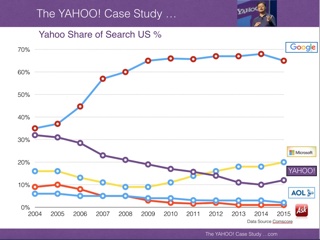 Yahoo and Google ... In the summer of 2002, Terry Semel CEO of Yahoo, approached Google with an offer to buy the company. Google founder Larry Page’s initial asking price was $1 billion quickly rising to $3 billion then $6 billion. It was obvious Page did not want to sell to Yahoo. The founders Larry Page and Sergey Brin wanted to keep the company independent. An IPO of their own was an easy and obvious option to cash up, in part exchange for equity. Semel was rebuffed. The back up plan was to create a rival to Google. Yahoo had already acquired Inktomi for $235 million. Overture had acquired Alta Vista for $140 million. Yahoo acquired Overture in July 2003 for $1.6 billion. The battle lines were drawn between Yahoo and Google. Initially the strategy proved successful. In 2004, the two brands were tied. According to ComScore, Yahoo held 32% of the search market and Google 35%. Yahoo had been the leader in search and online ads for years but now Yahoo had to contend with the Number two slot in a fast growing market. Within two years, Yahoo share of search had fallen below 30%. Google had pushed forward to achieve a 45% share, rising to over 65% by 2009. By 2014, Yahoo was struggling to hold a 10% share of search. Google was the clear market leader with a 70% share. The Google disruption in search was evident. Yahoo and Facebook … In 2006, Yahoo was still the big player on the internet block. Yahoo would see most, if not all deals, on the street. Terry Semel CEO had the chance to buy Facebook established just two years earlier for $1 billion. The Yahoo camp had mixed views about the deal. Some believed that if the campus based web site could be opened up to a wider audience, Facebook could become one of the most valuable social media platforms on the internet. Others had their doubts. The Yahoo protagonists believed the deal could value Facebook at up to $1.6 billion. In principle a deal had been agreed at the magic $1 billion level. A great deal for Zuckerberg after just two years. A great deal for Yahoo too. Semel’s tough love negotiations forced Zuckerberg to walk away from a meagre $850 million offer, never to return. Had Yahoo missed out? Undoubtedly. Within one year, Facebook had taken an investment from Microsoft valuing the company at $15 billion. In 2016, Facebook is valued at $340 billion. Google is valued at nearly $500 billion. Yahoo is valued at just over $35 billion largely due to the investment stakes in Yahoo Japan and Alibaba. Facebook’s share of display advertising surpassed Yahoo, just as Google has achieved in search. Yahoo and First Mover advantage … Yahoo had secured First Mover Advantage as the large internet portal. But first movers are often worst movers if the competitive market advantage is not pressed home. The scale of activity meant the giant could be out manoeuvred by focused start ups in selected areas. Yahoo was in danger of trying to do too much across the internet, without adequate focus in key sectors. The competitive framework was extensive. Google in search and PPC, Facebook in social networking and display ads. PayPal was dominating payment. eBay was emerging as the key name in auctions. Microsoft in email, MySpace in social AOL in messaging and CNN in news and sports. Yahoo had missed out on Google, Facebook, YouTube, LinkedIn and Twitter. Competitor platforms were established in Search, Advertising and Social. Yahoo acquisitions of Overture ($1.6bn) Flickr and Tumblr ($1.1bn) could not reverse the decline. The Yahoo case study is a classic example of Digital Disruption and many other of the key elements of our Masters Of Strategy Guidelines. Download the Case Study. Or why not check out our mobile version available as a YAPP! We really like the YahooYapp! Download and post a comment. Let us know what you think ... Don't miss our regular updates on Corporate Strategy in the Masters of Strategy Series. © 2016 John Ashcroft and Company, Economics, Strategy and Social Media, experience worth sharing. ______________________________________________________________________________________________________________ The material is based upon information which we consider to be reliable but we do not represent that it is accurate or complete and it should not be relied upon as such. We accept no liability for errors, or omissions of opinion or fact. In particular, no reliance should be placed on the comments on trends in financial markets. The receipt of this email should not be construed as the giving of advice relating to finance or investment.. 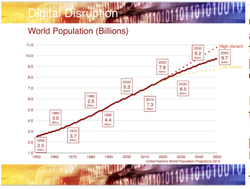 1 Population … Is population growth an influencing factor in digital disruption? Not really!According to the UN World Population data, in 2015 there were 7.3 billion people on the planet. Up from 2.5 billion in 1950 and 5.4 billion in 2000, the world will experience further population growth to 9.7 billion by 2050. Numbers are continuing to rise but the growth rate is slowing. The average rate of world population growth (CAGR) over the last sixty years has been 1.7%. The projected rate of growth of population is set to slow to just under 1% over the next forty years. Greater longevity is offset by lower fertility rates. The world is in a steady state of growth. No evidence in the basic population data to support the digital disruption and exponential disruption phenomena. 2 Connectivity Greater connectivity around the world is one of the factors facilitating disruption. Mobile phones have been key in this regard. The number of mobile phones in use has increased rapidly over the last fifteen years. By 2016, total volume (mobile phones) increased to 8.5 billion compared to a population of just 7.3 billion. There are more phones in use than people on the planet. No wonder, some claim there are more phones than toothbrushes. The phenomenon will not persist forever. We forecast the trend will reverse around the turn of the century. The day of the toothbrush, will return but not for some time yet. By then toothbrushes may be connected to the internet, with feed back on flossing performance and dental decay. But wait we move too fast ... The number of smart phones has increased from less than one billion units in 2010, to approximately 3.2 billion last year and 4.1 billion this year. Conventional mobile (non smart) stocks peaked last year at around 5.5 billion. They are set to decline to 3.3 billion in our model by 2020. We expect the number of phones in use to peak at 9.0 billion in 2020 as the total stock of smart phones increases to just under six billion units. Product life cycles dominate the analysis, in this and in all things. 3 Connected Devices … Of course there are many ways to connect to the internet. We expand our research into “Digitally connected devices”. We include in our analysis - desktops, laptops, tablets, phablets and phones. According to our dataset, the number of “digitally connected devices” has increased from less than 1 billion in 2009 to around 5.0 billion in 2014. We claim 2016 as the year of singularity when the number of digitally connected devices, equalled the number of people on the planet. From a level of around 7.4 billion this year, we forecast the number of digitally connected devices will increase to around 11 billion by 2020, peaking around 15 billion by 2030. 4 The internet of things ... And what of the internet of things? It is estimated the number of “things connected to the internet” could be over 50 billion by 2020. This may well be true. It could even by higher. According to Gartner, there will be nearly 21 billion devices on the internet of things by 2020. ABI Research estimates that more than 30 billion devices will be wirelessly connected to the internet by 2020. 50 billion appears to be a reasonable assumption assuming our 11 billion digital connected devices is correct. To the list of digital devices we add home appliances, connected clothing, medical devices, transportation, buildings and cities. Smart bodies, smart homes, smart cars, smart grids, smart farms, smart roads, smart cities … “Get Smart” will take on a whole new meaning to digital urgency. "Things" as an "inextricable mixture of hardware, software, data and service is the legal definition. People will be connected to the internet via internal and external devices. The pacemaker hooked up to the mainframe offering real time analytics. The digital dispenser offering feedback on medicine consumption and dosage levels. The nano bots coursing through the veins relaying important data on cell counts, sugar levels and genomic disorders. As the cost of chips fall, along with the cost and time of processing the data, the “nerd nirvana nears”. Data storage is made available and the data challenge becomes enormous. What secrets to predictive modelling will be extracted from the huge data flow? Access to market has never been easier and cost of acquisition has never been lower. It is an exciting time for those with the right attitude and the right software to process the data and provide the service. 5 The challenge of data ... And what data there will be! Six years ago, Google’s Eric Schmidt claimed we create as much information every two days as has been created since the dawn of civilisation and the year 2003. In 2015, we probably produced more every day since the birth of the printing press in the first 555 years. The rate of increase is exponential. Videos, photos, audio messages, blog posts are streaming onto the internet in ever increasing proportion. That’s lots and lots of information and lots of need to store. According to the Cisco Cloud Global Index 2015, annual global data centre traffic will reach 10.4 zettabytes by the end of 2019, up from just over 3.4 zettabytes in 2014. Global cloud traffic will reach 8.6 Zettabytes up from 2.1 ZB over the same period. Data created by the internet of everything will exceed 500 ZettaBytes by 2020 up from 150 ZettaBytes in 2015. That’s over half a Yottabyte each year with more to come. That’s a lot of data. How big is a Zettabyte - think Kilobyte (1) Megabyte (2) - Gigabyte (3) - Terabyte (4) - Petabyte (5) - Exabyte (6) - Zetabyte (7) and still to come yottabyte (8). Figures in brackets are the power factors from the humble Kilobyte. Consider the Encyclopaedia Brittanica is approximately 24 GB in total! 6 Data Storage ... Digital connectivity is facilitating the process of digital disruption by reducing access to market barriers and reducing the cost of client or customer acquisition. Word of mouth becomes word of byte. The R(0) increases to spread the information flow. There is of course a downside. Product life cycles become more truncated as the life time values fall in periodicity and value. Storage on the other hand is becoming more accessible to new and fast growing businesses. The failed whale syndrome, identified in our Twitter case study is largely a thing of the past for new businesses. Constant crashes as the MAUs increase should be an anachronism in the digital era. Rapid elasticity is the new mantra for cloud service providers. Start ups and unicorns are able to benefit from the rivalry between Amazon Web Services, Google, HP and IBM cloud. Personal cloud usage has increased from zero in 2010 to over one billion users this year and will increased to 2.5 billion by 2020. The volume of data stored has increased from zero 2010 to 17 exabytes by 2015 and will increase to 45 exabytes by 2020. New industries have emerged to accommodate the growth of the digital era and personal / small business cloud storage. Box.com with a market share of over 50% in the USA, lays claim to a 30% share world wide. The company still lays claim to a market cap of $1.3 billion US. Revenues of $325 million have yet to deliver a profit but that is no longer a critical KSF in the digital age. Conclusions ... Population growth, mobile connectivity, digital devices, the internet of things, data generation, processing costs, data storage have lowered the barriers to market entry and participation. Cost of acquisition, MAUsS, life time values have emerged as the new metrics for the digital age. It is the world of Minimum Value Proposition, get it up and get it right. Marissa Mayer’s LEO - launch early and often and Googles SOAR - send out and revise are the new guidelines for product success. But in many ways, the old corporate strategy guidelines remain dominant. Product life cycles are so important. Exponential growth rates are merely a phenomenon of the width of the x axis and the size of the R(0). Understanding the challenges of digital disruption to an existing business player, require the traditional framework identified in our CBS NEWs analysis. Benchmark and market map, all things at all times. Profile Competitors, Buyers, suppliers and new products, new players, new technologies and new platforms. Next week we will examine the industries of the future, so important in the digital age … |
John Ashcroft
Masters of Strategy on Digital Disruption from the Dimensions of Strategy Team ... experience worth sharing ... Archives
May 2023
Categories
|
- Home
- Artificial Intelligence
- Digital Disruption
- Digital Accommodation
- The Master Class
- The Case Studies
- Empires of the Cloud
- Letters to a Friend on Social Media ...
- The Tool Box
- Five Dimensions
- CRIMSON Clouds
- Market Mapping
- CBS News
- PESTEL framework
- Kaizen and KSFs
- Business Modelling
- 7 Ss Framework
- Crisis Management
- Secrets of a great presentation
- Business Planning
- Fishing in a Pond?
- About
- The Apple Case Study
- The Lego Case Study
- The Yahoo Case Study
- The Twitter Case Study
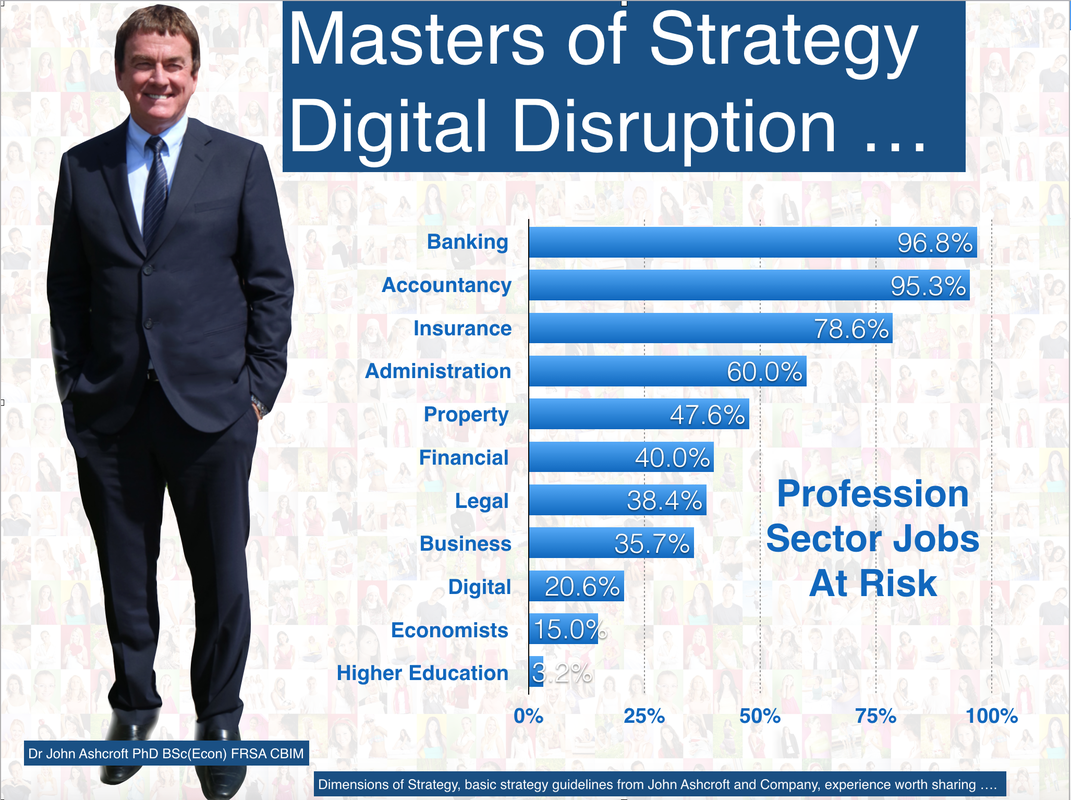
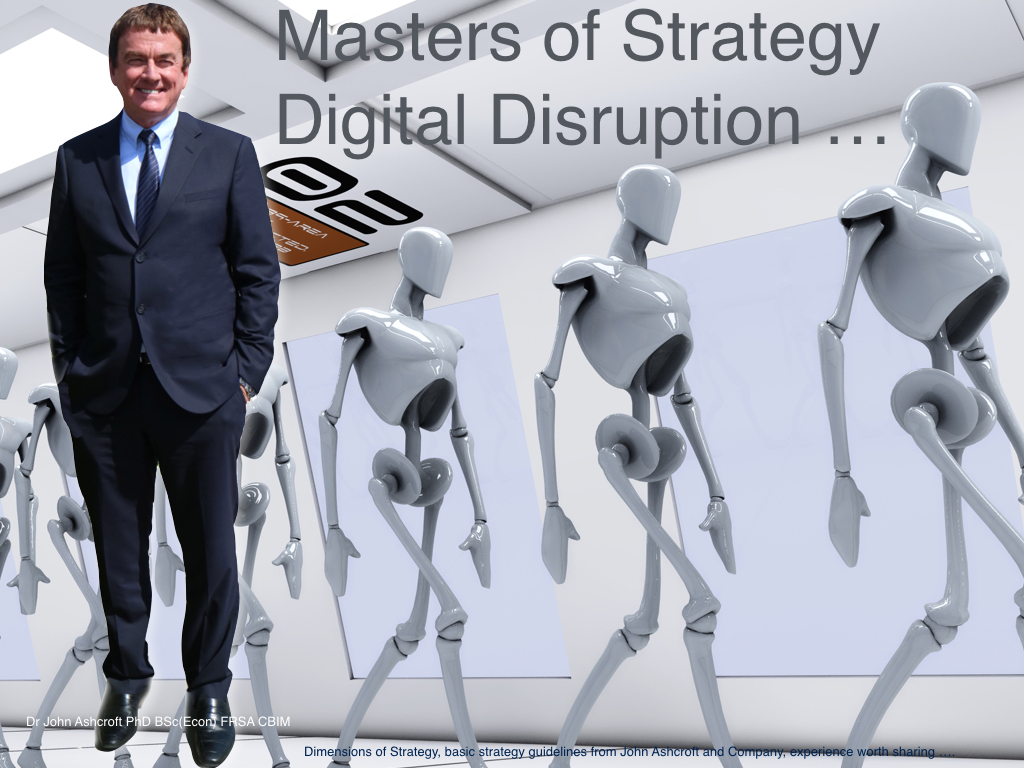
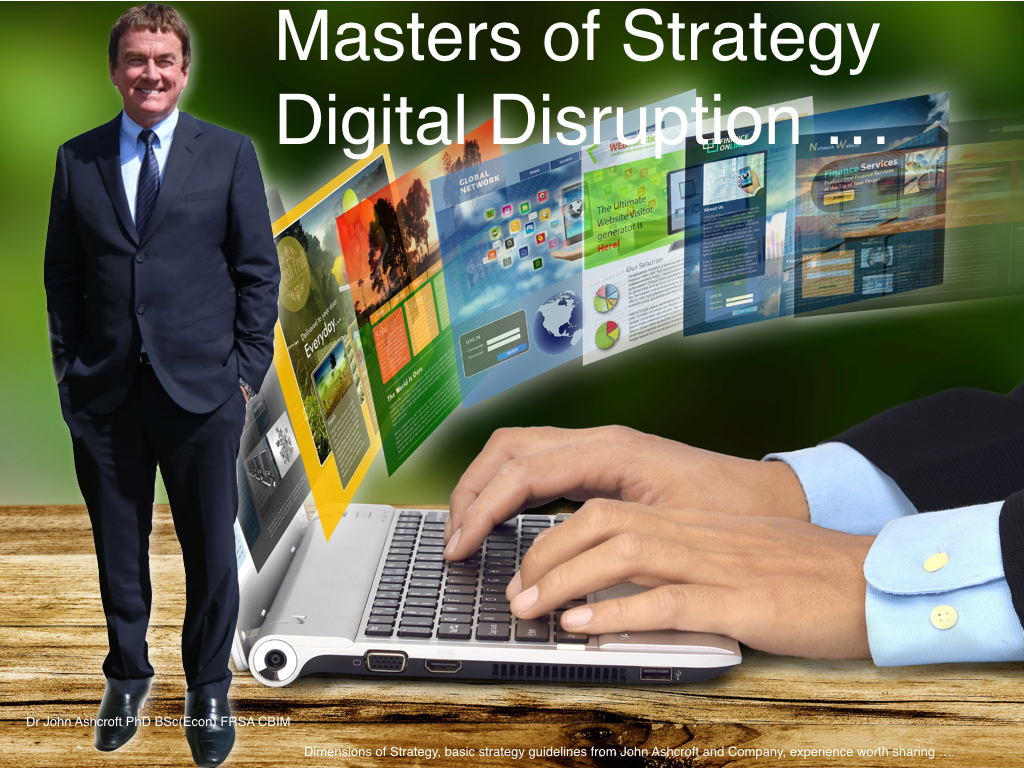
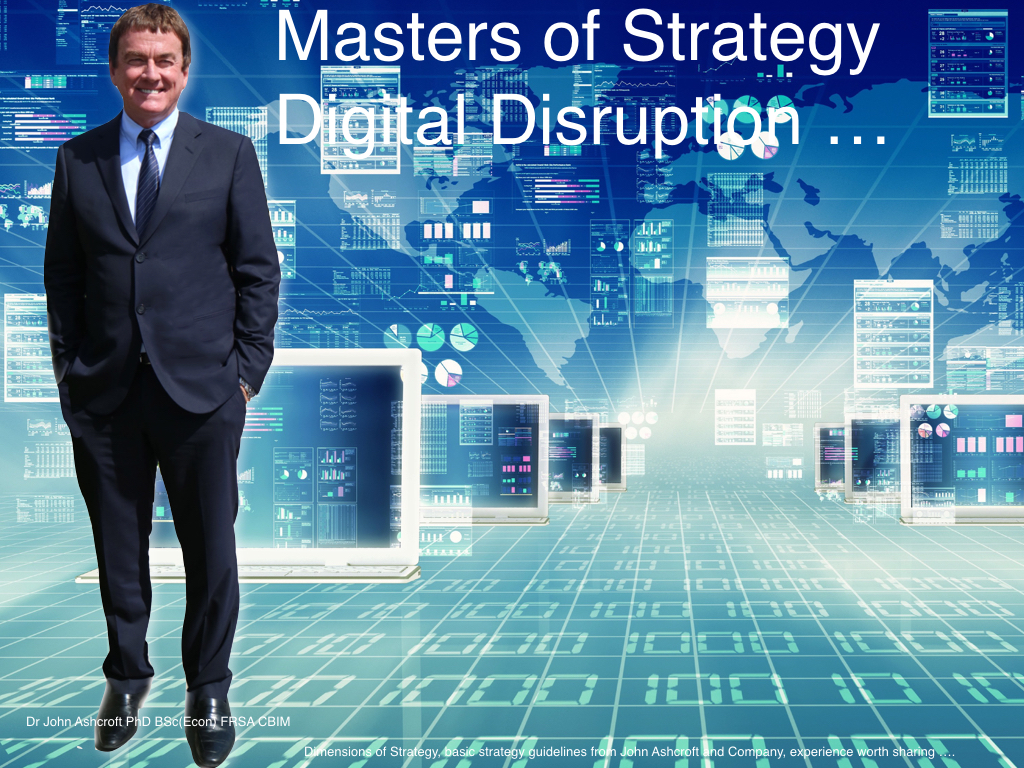
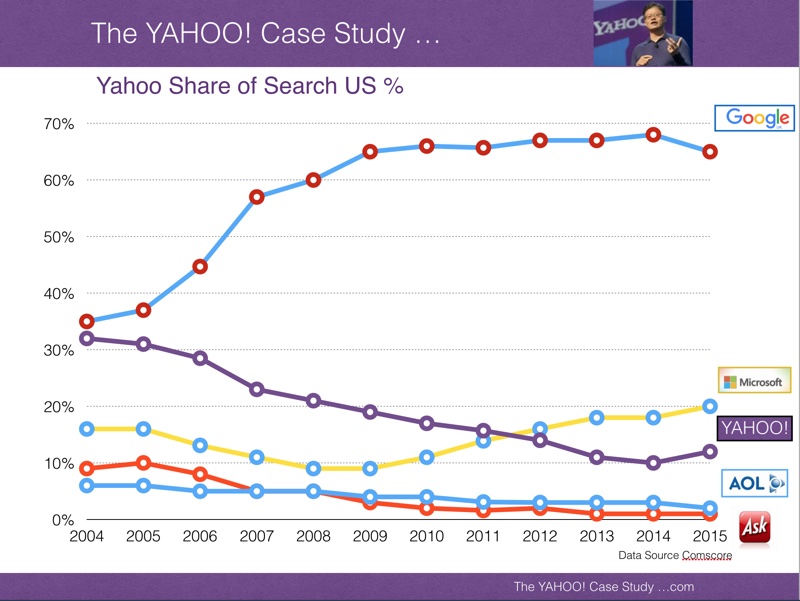
 RSS Feed
RSS Feed
